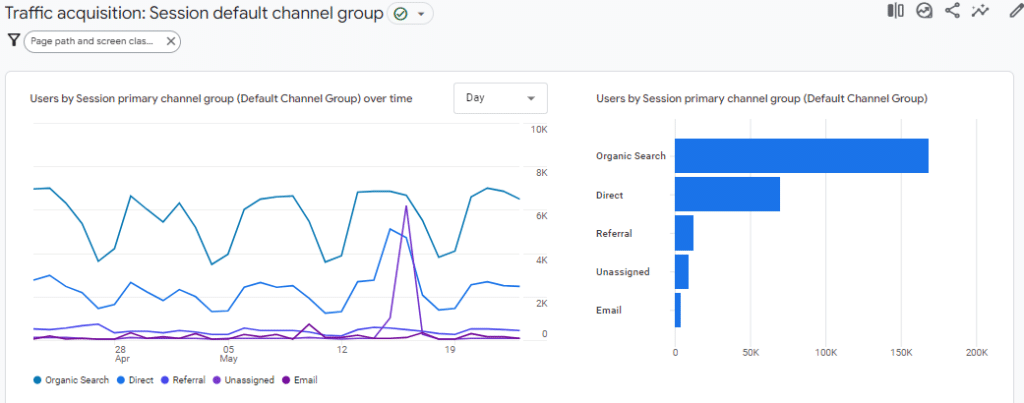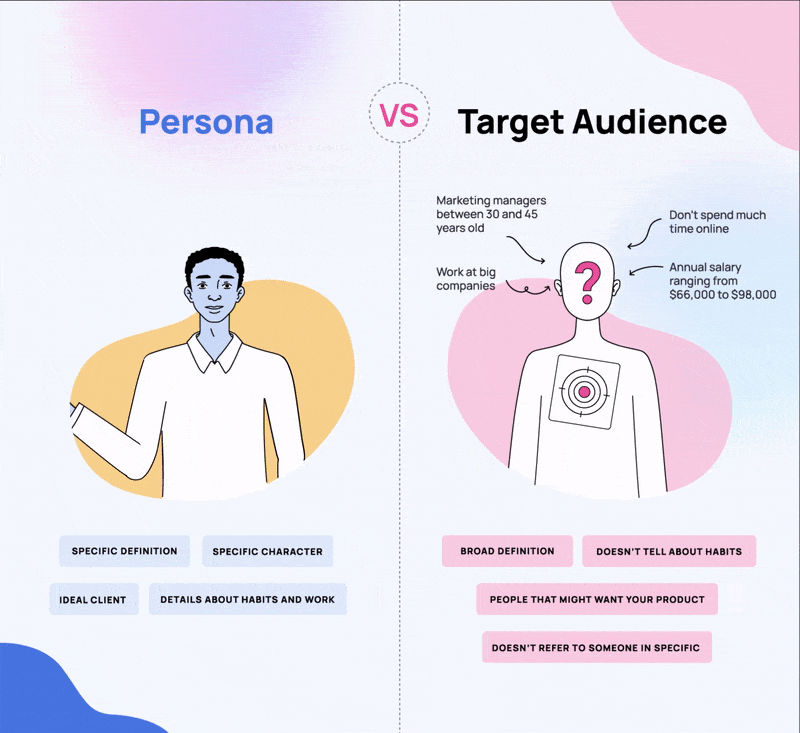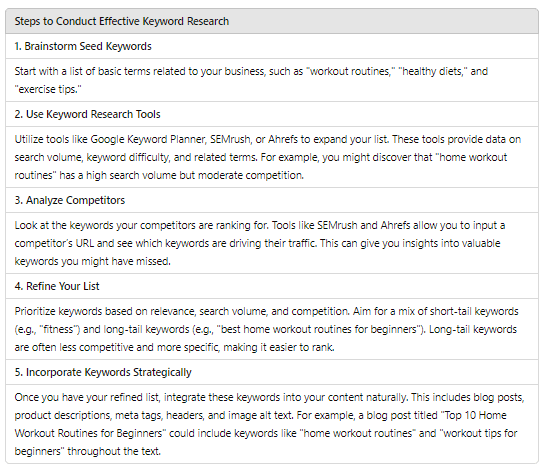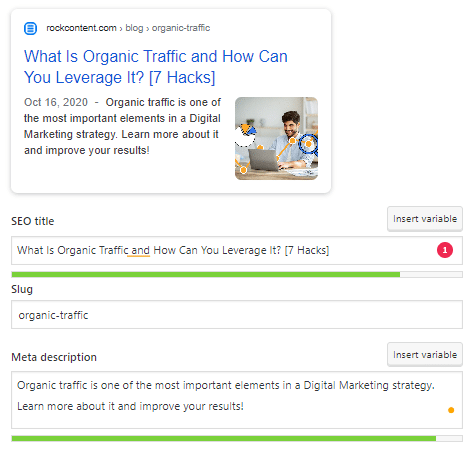Digital marketing begins with attracting the right people. Without drawing the right audience to your digital channels, achieving results becomes a challenge.
For a long time, paid methods were the primary way to capture potential customers’ attention. However, with the internet’s rapid development, this landscape has significantly changed.
Today, you can generate website visits without spending money on ads or buying email lists — this is known as organic traffic.
Organic traffic has become a primary goal for many companies incorporating digital strategies to acquire customers.
Curious why organic traffic is so highly valued and how your business can benefit from it? Read on to find out!
Keep reading!
What Is Organic Traffic?
Traffic refers to all the visits that a digital channel, such as a company’s website or blog, receives. Organic traffic, specifically, is the visits you get without relying on paid ads.
This type of traffic typically comes from search engines like Google and Bing. However, attracting organic traffic isn’t entirely free; the strategies involved require both money and time.
The key distinction between organic traffic and paid traffic is that with organic traffic, you invest resources upfront for results that can continue to pay off over time.
For instance, a well-crafted blog article may require significant time and effort to create, but it can generate ongoing traffic long after it’s published. In contrast, an ad campaign only runs for as long as you continue to fund it.
Understanding and leveraging organic traffic can provide sustained benefits for your business, making it a crucial component of any comprehensive digital marketing strategy.
What Other Types of Traffic Can You Generate?
If you’ve ever accessed the Google Analytics panel, you’ve probably come across various types of traffic sources. But what do they mean?
In essence, website traffic is categorized into two main types: paid and organic, as mentioned earlier. However, the specific terms used help us understand how each visitor arrived at a particular page.

Aside from organic traffic, let’s delve into the meanings behind the other traffic sources:
- Paid: This refers to attracting visitors by placing ads on Google or on websites your target audience frequents.
- Direct: When someone accesses your site directly, without coming from another website. It’s still a form of organic traffic, since it doesn’t originate from paid sources.
- Social: This pertains to traffic originating from social media, often occurring when links are shared on these platforms, directing traffic to a website.
- Referral: When someone visits a page from any site that is not a search engine. For example, this happens with backlinks to an article on your blog.
What Are The Benefits of Investing in Organic Traffic?
Earlier in the article, we mentioned that organic traffic has become a primary focus for many companies investing in digital marketing. Now, let’s explore the reasons behind this trend with practical examples:
Cost-effectiveness
First and foremost, organic traffic helps reduce the overall costs of your marketing strategy compared to paid advertisements.
For example, a company that invests in SEO to rank highly for relevant search terms can consistently attract visitors without ongoing costs.
This results in a higher profit margin on sales, making the cost-effectiveness of organic traffic unmatched.
Scalability
Ads are not easily scalable. When you stop investing in them, your traffic dwindles.
For instance, an e-commerce store that relies on organic search rankings for popular product categories can continue to grow its customer base without increasing ad spend.
The more visits they get from organic search, the lower their costs become, making it an ideal choice for long-term growth.
Relevance
Google clearly labels paid advertising, so users know when a result is an ad. This can erode trust, as users often perceive these pages as sales-focused.
In contrast, a blog post that answers common customer questions can establish credibility and drive organic traffic. Users view these results as more genuine, enhancing trust from the start.
Longevity
An organic strategy has no expiration date. A single well-optimized blog post can generate significant traffic and sales over an extended period.
For example, a how-to guide on using a product can continue to attract visitors and drive sales for years, unlike paid ads, which require continuous funding.
Relationship Building
While paid traffic is valuable for immediate sales, organic traffic is superior for building strong relationships and guiding customers through the buying journey.
For instance, a series of educational articles and engaging social media content can help nurture leads, build trust, and create long-term customer loyalty.
Consider the factors of cost, user trust, and scalability we’ve discussed. By focusing on organic traffic, you can achieve sustained growth and build meaningful connections with your audience.
What Are the Best Strategies for Driving Organic Traffic?
If you’re convinced that organic traffic is worth investing in, you might be wondering: “How can I increase visits organically?” The answer lies in implementing effective strategies, such as the ones outlined below.
Content Marketing
Content marketing is a cornerstone of digital marketing. Today, generating organic traffic is nearly impossible without creating content that resonates with your target audience.
To attract qualified visitors without relying on paid sources, you need to understand and consistently apply content marketing principles.
This includes producing blog posts, videos, infographics, and other forms of content that provide value and engage your audience.
SEO
SEO (Search Engine Optimization) is the practice of improving your website’s visibility and ranking on search engines like Google.
It involves optimizing your site to be more accessible, relevant, and attractive to search engines. This includes keyword research, on-page optimization, technical SEO, and building high-quality backlinks.
Effective SEO not only makes your website easier to find but also enhances the user experience, increasing the chances of your site appearing at the top of search engine results pages (SERPs).
A well-optimized site is a strong candidate for generating substantial organic traffic.
Email Marketing
Building relationships with your audience is crucial for turning visitors into leads and, eventually, customers. Email marketing is one of the best channels for nurturing these relationships.
By regularly sending your subscribers valuable and relevant content, you can keep them engaged and drive them back to your site.
An effective email marketing strategy helps maintain interest and directs traffic to your content, boosting your organic reach.
Each of these strategies plays a vital role in attracting and retaining visitors, ultimately leading to sustainable growth for your business.
7 Hacks to Boost Your Organic Traffic Generation
In addition to the strategies focused on acquiring organic traffic for your website or blog, there are other smaller yet essential approaches for achieving success.
Below, you’ll find five basic hacks that you need to follow to boost your company’s qualified organic traffic generation.
1. Prioritize your buyer persona
It’s not enough to create content solely based on what Google deems relevant while disregarding your buyer persona. After all, it’s essential to remember that those who will consume your content are real people.
Consider what your ideal customers want and need. Learn how they search for answers and tailor your content to align with their preferences and planning.

2. Leverage Keyword Research
Keyword research is essential for achieving high rankings in search engines because it helps these platforms understand what users are searching for and which content best fulfills those needs.
Regardless of the size of your blog or website, making keyword research a top priority from the beginning is crucial.
Keyword research involves identifying specific words and phrases that your target audience is likely to use when searching for information related to your industry or offerings.
This process allows you to understand the language your potential customers use and ensures your content aligns with their search intent.

Why Effective Keyword Research is Crucial
Search engines like Google use sophisticated algorithms to crawl and index web pages. When a user enters a search query, the search engine matches that query with the keywords present on various web pages.
Websites with well-optimized content that aligns with the user’s search query are more likely to appear prominently in search results.
A strong keyword strategy improves your search engine ranking and ensures your content matches what potential customers are looking for.
This increases the likelihood of attracting targeted traffic, which can lead to higher engagement, more leads, and better conversion rates.
3. Craft Evergreen Content
Evergreen content refers to material that remains valuable and relevant to your audience over an extended period, often for years. This type of content is essential for building a sustainable source of organic traffic.
Creating evergreen content involves focusing on timeless topics and fundamental concepts. Examples include “how-to” guides, comprehensive tutorials, and in-depth explanations of core industry principles.
For instance, an article titled “How to Optimize Your Website for SEO” will remain relevant because the basics of SEO stay consistent over time.
When crafting evergreen content, avoid referencing specific dates or events that might become obsolete. Emphasize knowledge and principles that withstand the test of time.
For example, instead of “Top Marketing Trends for 2024,” create a guide on “Essential Marketing Strategies for Long-Term Success.”
Why is Evergreen Content Crucial?
- Continuous Traffic: Evergreen content attracts organic traffic continuously, as readers find value long after its initial publication. A guide on “Basic Cooking Techniques” will attract new readers consistently.
- SEO Benefits: Search engines favor consistently relevant content, improving your site’s visibility. An article like “The Ultimate Guide to Plant Care” will continue to attract search traffic as new plant enthusiasts seek reliable information.
- Authority Building: High-quality evergreen content establishes you as an authority. A series on “Financial Planning Basics” can position a financial advisor as a trusted expert.
- Resource Efficiency: While creating in-depth evergreen articles may take more time upfront, the ongoing benefits far outweigh the initial costs. A detailed tutorial on “Setting Up a Home Office” remains relevant as remote work becomes common.
To create top-notch evergreen content, consider using platforms like WriterAccess. Try WriterAccess free for 14 days to find professional writers who will elevate your content strategy.
4. Craft compelling content descriptions for Google
Google provides the option to present content differently on search result pages to capture users’ attention.
You can customize the title of an article or page, as well as the meta description that appears on the search engine results pages (SERPs).
Optimize your content with copywriting techniques to persuade users and enhance the click-through rate.

5. Repurpose content into various formats
Repurposing content involves adapting your material into different formats to broaden its reach and boost its effectiveness. This ensures your content stays relevant and accessible across diverse platforms.
Examples of Content Repurposing
- Blog Posts to Infographics: Convert detailed blog posts into visually captivating infographics. For instance, a post on “10 Tips for Effective Time Management” can become an infographic showcasing these tips with eye-catching visuals, ideal for social media sharing. Ion is a great tool that can aid you with that without coding.
- Slide Shows: Transform content into slide shows for platforms like SlideShare or webinars. An article on “The Benefits of Organic Marketing” can be condensed into key points for easy presentation, catering to visual learners.
- Videos: Convert written content into engaging videos or tutorials. For instance, a blog post on “How to Use SEO Tools” can become a step-by-step video guide, appealing to users who prefer visual content.
- eBooks: Compile related blog posts into comprehensive eBooks. A series on “Digital Marketing Strategies” can be combined into a complete guide, serving as a lead magnet to expand your audience.
Benefits of Repurposing Content
- Increased Reach: Different formats appeal to varied audience preferences, expanding your reach across platforms.
- Enhanced SEO: Diverse content types improve search visibility, boosting your overall SEO efforts.
- Time and Cost Efficiency: Repurposing existing content saves time and resources compared to creating new material.
- Consistent Messaging: Maintaining a consistent message across formats builds trust and brand recognition.
In summary, repurposing content into various formats is a savvy strategy to maximize reach, enhance SEO, and uphold consistent messaging.
6. Regularly update and refresh content
Organic traffic thrives on fresh and relevant content. Regularly revisit and update your existing content to keep it current and valuable. Search engines favor content that is up-to-date and informative.
When you consistently refresh and maintain your content, it can continue to attract organic traffic long after its initial publication, making it a valuable asset for your website or blog.
To regularly update and refresh your content, start by identifying articles or pages that are outdated or could benefit from new information.

Review the content for accuracy, relevance, and any changes in industry trends or data. Update statistics, examples, and any outdated information to ensure its current validity. Additionally, consider adding new sections, insights, or case studies to provide more value to your audience.
After making these updates, don’t forget to adjust the publication date to reflect the latest changes, signaling to search engines that your content is fresh. Finally, promote the refreshed content across your marketing channels to reach both new and existing audiences.
7. Dedicate time to promotion
Effective content promotion is key to maximizing your content’s reach across diverse traffic sources. It’s crucial to invest significant effort in promoting every piece of content you create.
For instance, don’t limit the publication of your video content to just one platform. Consider sharing it on multiple platforms like YouTube, Vimeo, Facebook, TikTok, and your website if it aligns with their identity and suits your business objectives.
Dedicating time to content promotion is essential. The more effort you invest in this aspect, the more exposure your message will receive, leading to increased engagement with your brand, all without relying on paid advertisements.
Generating organic traffic requires dedication, research, and consistency in delivering valuable content to your target audience. However, the hard work pays off with consistent, scalable, and long-lasting results.
Achieving high rankings on search engines like Google significantly enhances your chances of attracting organic traffic. That’s why it’s crucial to grasp and implement primary SEO techniques. Click below to access our free guide on SEO and optimize your content for success!


![[Rock NA] State of Marketing Reports 2024 – Comkt Hubspot State of Marketing Report 2024](https://rockcontent.com/wp-content/uploads/2022/07/Banner-Fino-Rock-Convert-2500-%C3%97-500-px-19.png)






